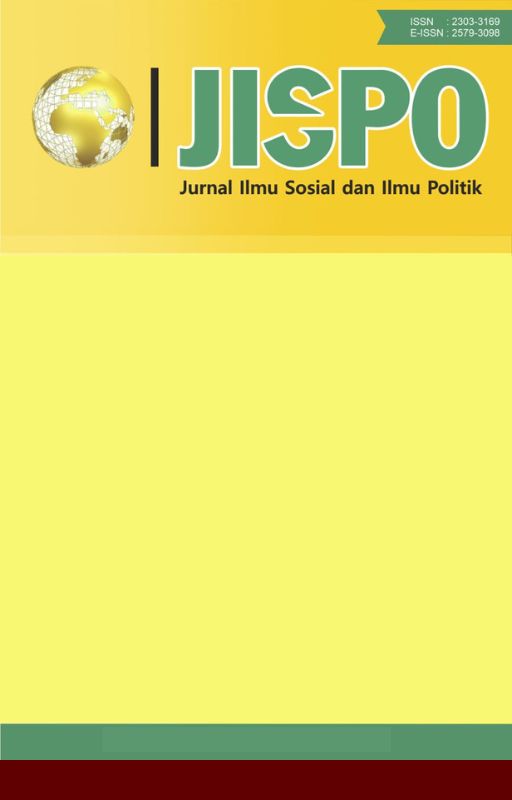MEMAHAMI DIALEKSI KONFLIK KERJA DAN PENGALAMAN KOMUNIKASI KARYAWAN DALAM PROSES RESOLUSI KONFLIK DI KANTOR IMIGRASI PADANG
DOI:
https://doi.org/10.15575/jispo.v9i1.4638Keywords:
Dialectics, Work Conflict, Cultural Communication, Employee, Experience.Abstract
This research was motivated by the emergence of work conflict in the scope of work in Padang Immigration Office. It happens because employees have different cultural characteristics and characters. The purpose of this study was to understand how the dialectics of conflict occur in employees and understand how the communication experience of employee in the process of resolving work conflicts. The study was conducted using Leslie A. Baxter's Relational Dialectic Theory, conducted on 10 employees using the phenomenological analysis method of Van Kaam. The results showed that the dialectic of conflict between employees occurred quite varied. First, there is a contradiction between the desire to get closer or distance themselves if there is a conflict. Second, competition contradiction of positions occured, because between employees have the nature of competing to achieve life goals. Third, contradictions between the desire to be open or closed with fellow employees, the informants try to open each other but still have confidential information in colleague's relationships. Communication experience in the conflict resolution process, used by employees is effective or ineffective conflict management.
References
Ahmadi. (2009). Psikologi Umum. Jakarta: Rineka Cipta.
Basrowi, dan Suwandi. (2008). Memahami Penelitian Kualitatif. Jakarta: Rineka Cipta.
DeVito, J. A. (1997). Komunikasi Antar Manusia. Jakarta: Professional Books.
Dharma, S. (2005). Manajemen Kinerja Falsafah Teori dan Penerapannya. Jakarta: Pustaka Pelajar.
Gibson, J. L., Ivancevich, J. M., dan Donelly, J. Jr. (1984). Organisasi dan. Manajemen Business. Publications Inc.
Griffin, A. (2011). A first look at Communication Theory-8ed. New York: McGraw Hill.
Hartatik, I. P. (2014). Buku Praktis Mengembangkan SDM. Yogyakarta: Laksana.
Hartatik, I. P. (2005). Perilaku Organisasi. Jakarta: Salemba.
Jamil, M. M. (2007). Mengelola Konflik Membangun Damai: Teori, Strategi dan Implementasi Resolusi Konflik. Semarang: Walisongo Mediation Center.
Kartono. (2004). Pemimpin dan Kepemimpinan. Jakarta: PT. Raja Grafindo Persada.
Kuntaraf, K. H. L. (1999). Komunikasi Keluarga: Kunci Kebahagiaan Anda. Bandung: Indonesia Publishing House.
Kuswarno, E. (2009). Metodologi Penelitian Komunikasi Fenomenologi: Konsepsi, Pedoman, dan Contoh Penelitiannya. Bandung: Widya Padjadjaran.
Leslie Baxter dan Barbara Montgomery. (1996). Relating: Dialogues and Dialectics. The Guilford Press.
Liliweri, A. (2011). Komunikasi: Serba Ada Serba Makna. Jakarta: Kencana.
Littlejohn, S. W. (1999). Theories of Human Communication sixth edition. USA: Wadsworth Publishing Company.
Littlejohn, S. W., dan Foss, K. A. (2009). Teori Komunikasi: Theories Of Human Communication. Jakarta: Salemba Humanika.
Luthans, F. 1985. Perilaku dan Budaya Organisasi. Jakarta: Salemba.
Moleong, L. J. (2008). Metodologi Penelitian Kualitatif. Bandung: Remaja Rosdakarya.
Moustakas, C. (1994). Phenomenological Research Methods. California: Sage Publications, Inc.
Sadarjoen, S. S. (2005). Konflik Marital: Pemahaman Konseptual, Aktual dan Alternatif Solusinya. Bandung: Refika Aditama.
Suharso, dan Retnoningsih, A. (2014). Kamus Besar Bahasa Indonesia Edisi ke 10. Semarang: Widya Karya.
Suprapto, T. (2005). Teori Komunikasi. Yogyakarta: Media Pressindo.
Supratiknya, A. (1995). Komunikasi Antar Pribadi, Tinjauan Psikologis. Yogyakarta: Kanisius.
Suranto, A. W. (2011). Komunikasi Interpersonal. Yogyakarta: Graha Ilmu.
West, R., dan Turner, L. H. (2008). Pengantar Teori Komunikasi: Analisis dan Aplikasi. Jakarta: Salemba Humanika.
Wirawan. (2010). Konflik dan Manajemen Konflik: Teori. Aplikasi, dan Penelitian. Jakarta: Salemba Humanika.
Downloads
Published
How to Cite
Issue
Section
License
Authors who publish their manuscripts in JISPO agree to the following terms:
- Authors retain copyright and grant the journal right of first publication with the work simultaneously licensed under a Creative Commons Attribution-ShareAlike 4.0 International License that allows others to share the work with an acknowledgment of the work's authorship and initial publication in this journal;
- Authors are able to enter into separate, additional contractual arrangements for the non-exclusive distribution of the journal's published version of the work (e.g., post it to an institutional repository or publish it in a book), with an acknowledgment of its initial publication in this journal; and
- Authors are permitted and encouraged to post their work online (e.g., in institutional repositories or on their websites) after publication process, or prior to and during the submission process, as it can lead to productive exchanges, as well as earlier and greater citation of published work (See The Effect of Open Access).


